William Barton - Kalkadungu: Music for Didjeridu and Orchestra (2012) CD-Rip
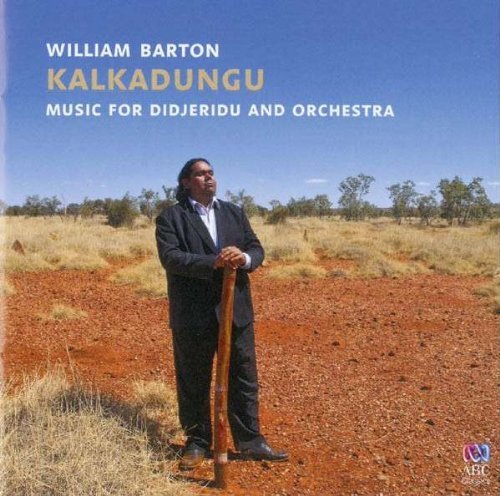
Artist: William Barton
Title: Kalkadungu: Music for Didjeridu and Orchestra
Year Of Release: 2012
Label: ABC Classics
Genre: Classical
Quality: FLAC (image+.cue,log,scans)
Total Time: 01:18:23
Total Size: 364 Mb
WebSite: Album Preview
Tracklist: Title: Kalkadungu: Music for Didjeridu and Orchestra
Year Of Release: 2012
Label: ABC Classics
Genre: Classical
Quality: FLAC (image+.cue,log,scans)
Total Time: 01:18:23
Total Size: 364 Mb
WebSite: Album Preview
1-5. Kalkadungu 23:57
6. Didjeridu Solo No. 1 4:54
7. Earth Cry 11:06
8. Voice and Didjeridu Improvisation 4:00
9. I Dream of Sacred … I Am My Dream 16:55
10. Didjeridu Solo No. 2 2:22
11. Requiem: VIII. Communion 6:44
12. Voice and Didjeridu Improvisation No. 2 5:26
13. Didjeridu Solo No. 3 2:03
Performers:
William Barton
Sydney Symphony Orchestra
The Didjeridu (or didgeridoo) is an indigenous Australian instrument otherwise known as “drone pipe” or “yidaki”. It is a long (1 to 3 metres) cylindrical piece of wood - usually eucalyptus branches - from which termites ate out the core. The instrument is played with continuously vibrating lips, and requires a constant flow of air. This involves special techniques to inhale air through the nose and at the same time exhale through the mouth, with optional simultaneous vocalization. Good players can play continuously for over 40 minutes! It is difficult to describe the sound of didjeridu, as it is so unlike any instrument we are used to. It is percussive, yet much richer than the usual percussion sound: earthy, reverberating, humming. Sometimes it is like the buzzing of thousands of bees; sometimes like hypnotic hollow droning. The instrument is able to produce throbbing pulses, deep growls and high-pitched shrieks. It has a mystic, spiritual power, and indeed is used in many Aboriginal ceremonies.
William Barton is recognized as one of the leading didjeridu players today. Having grown up with a love for both Western classical and indigenous Australian music, he advocates bringing the two together but so that neither will lose its essence in the process. On this disc we hear some of Barton’s compositions for didjeridu and orchestra, some works of other composers created with Barton’s instrument in mind, and a few of his improvisations.
Let’s start with the monumental Earth Cry, which was written by Peter Sculthorpe for the “regular” orchestra. After he heard William Barton play, he changed the score to incorporate a significant part for the didjeridu, and it’s in this guise that the work is now performed. A heavy brooding introduction is followed by a short and angry monologue for the didjeridu. The main ostinato of the work then starts - irate and tormented, with a lot of percussion. The didjeridu’s part is integrated into the texture. The effect is as if still the features of a stone statue suddenly started moving with life. We witness a huge climax, catastrophic in slow motion, and the didjeridu is heard pleading, dancing and crying. The last part starts as a doleful threnody, anxious and tragic. The didjeridu seems to permeate the music with the forces of Nature at both conscious and subconscious levels. This is a powerful masterpiece and leaves a deep impression.
Barton’s I dream of sacred … I am my dream is very beautiful. It speaks of the two cultures: their meeting and their dialogue. In the first section the soaring wordless soprano, like a bridge, connects the voice of Western instruments and the didjeridu. The music is restless, cool and misty. The voice of Margaret Schindler is straight and a bit hard at times, but appropriate. The second part is with words, setting the beautiful poem by Judith Wright about the tree of the heart. It is more active and fast, as in the Villa-Lobos Bachianas Brasileiras No.5. The music is sharp and bouncy yet not dry, the singer’s voice strong and firm. The didjeridu does not oppose itself to the orchestra but joins in. In the short final part the soprano is voiceless again. The music is happy now: a bridge has been built through the dreams of the two cultures. After a slow introduction, the music becomes fast and rhythmic, ending in muscular and energetic affirmation.
Peter Sculthorpe, the spiritual father of the contemporary Australian musical school, is never too far from the indigenous. The Communion part of his Requiem contains cosmic, magical music, luminous and tragic at the same time. The didjeridu, as the voice of the Nature, enters into the veins, as do the bird voices in Rautavaara’s Cantus Arcticus. The entire Requiem was MusicWeb International’s Record of the Month (see review). Side by side with the standard Latin text we hear an Aboriginal lullaby (Mumma warruno / murra wathunno) that Sculthorpe had already used in his Maranoa Lullaby for mezzo and string quartet: beautifully done by the Brodsky Quartet and Anne Sophie von Otter on Challenge Classics 72007. The didjeridu’s voice is friendly and comforting.
Three tracks are solos performed by Barton alone. They demonstrate his virtuosity, the surprising range of sounds and emotions that the instrument is capable of producing and expressing. The first solo starts like a mightily imperative summons, then the rhythm thickens and we enter a frenzied dance, a kind of mini-Rite of Spring, with a triumphant ending. The second solo also has the character of a ritual dance, and is rhythmically very dense. The didjeridu sings and accompanies itself - I have no idea how the guy does it! The third solo demonstrates different sound-effects, such as the high-pitched “bird-talk”. The music is fiery, yet not without humour, an intense and attractive piece.
In two didjeridu-and-voice improvisations, William Barton is joined by his mother Delmae. She jotted down the words while William was improvising his solos, and then immediately recorded the vocal part. The first improvisation takes the form of a declamation. Over the monotonous growling of the didjeridu, the text glorifies an ancient sacred tree and its role in the universe: the Tree of life, the Tree of salvation. The musicality grows out of monotony. In the second improvisation, Delmae Barton is head crying and wailing. This is not your normal type of singing and definitely not something you’ll welcome your guests with. I think I scared many a granny - never on purpose! - when passing by in a car with windows open and this disc playing. The didjeridu is very active; together they create a very authentic feeling of real folk music. This wailing manner of singing is an acquired taste, but its raw Ur-power is undeniable.
The title-work of the discis an ambitious musical canvas, created by Barton together with Matthew Hindson. It retells the events of 1884, when the people of the Kalkadoon tribe (to which Barton belongs) made a desperate stand against the armed forces of the European settlers. The first part, Warrior Spirit I, depicts the bloodshed and the indomitable spirit of the Kalkadoon people. This music is functional and not pretty - as is the war itself: it is full of orchestral turmoil and violent clashes, the terror of the harsh brass and martial determination. In the philosophical Songman’s Entrance Barton’s voice sounds hollow and tired, as if passing through the gray mists of time. Day enters with the sound of electrical guitar. The music is static and pensive. In the sad Bleached Bones, “viola and cor anglais represent the survivors wailing for the loss not only of their people but their entire culture”. The music is multi-layered and quite cinematic at times, with evocative sonic effects. In Warrior Spirit II, more anxious than its first instance, once again remembers the fiery spirit of Barton’s ancestors. The didjeridu finally makes its entrance in a long, belligerent cadence. Its song becomes more grand with the entry of the bass drum. In the last part, Spirit of Kalkadunga, the full orchestra joins in “as the two opposing cultures are brought into alignment”. The ending is grandiose and enthralling, and the didjeridu is beautifully woven into the dense orchestral fabric. The entire Kalkadungu work is not easy to digest, so I usually start listening to this disc from Earth Cry, and leave Kalkadungu for the end. It is more demanding, and has most angst than beauty.
Australian music emerges as one of the big schools, whose voice is recognizable and independent. Like every big school it has many faces, and one of those faces is the link to indigenous culture. This album contains very diverse music, all enlivened by the remarkably inexhaustible voice of the didjeridu. If you have not had contact with this wonderful instrument before, this disc could mark a major discovery for you. It also serves as an excellent showcase for the virtuosity of William Barton and indeed for a lot of great music. Not everything here is easy listening - especially the title work, or Delmae Barton’s voice improvisations. Demanding but in the end rewarding. – Oleg Ledeniov
William Barton is recognized as one of the leading didjeridu players today. Having grown up with a love for both Western classical and indigenous Australian music, he advocates bringing the two together but so that neither will lose its essence in the process. On this disc we hear some of Barton’s compositions for didjeridu and orchestra, some works of other composers created with Barton’s instrument in mind, and a few of his improvisations.
Let’s start with the monumental Earth Cry, which was written by Peter Sculthorpe for the “regular” orchestra. After he heard William Barton play, he changed the score to incorporate a significant part for the didjeridu, and it’s in this guise that the work is now performed. A heavy brooding introduction is followed by a short and angry monologue for the didjeridu. The main ostinato of the work then starts - irate and tormented, with a lot of percussion. The didjeridu’s part is integrated into the texture. The effect is as if still the features of a stone statue suddenly started moving with life. We witness a huge climax, catastrophic in slow motion, and the didjeridu is heard pleading, dancing and crying. The last part starts as a doleful threnody, anxious and tragic. The didjeridu seems to permeate the music with the forces of Nature at both conscious and subconscious levels. This is a powerful masterpiece and leaves a deep impression.
Barton’s I dream of sacred … I am my dream is very beautiful. It speaks of the two cultures: their meeting and their dialogue. In the first section the soaring wordless soprano, like a bridge, connects the voice of Western instruments and the didjeridu. The music is restless, cool and misty. The voice of Margaret Schindler is straight and a bit hard at times, but appropriate. The second part is with words, setting the beautiful poem by Judith Wright about the tree of the heart. It is more active and fast, as in the Villa-Lobos Bachianas Brasileiras No.5. The music is sharp and bouncy yet not dry, the singer’s voice strong and firm. The didjeridu does not oppose itself to the orchestra but joins in. In the short final part the soprano is voiceless again. The music is happy now: a bridge has been built through the dreams of the two cultures. After a slow introduction, the music becomes fast and rhythmic, ending in muscular and energetic affirmation.
Peter Sculthorpe, the spiritual father of the contemporary Australian musical school, is never too far from the indigenous. The Communion part of his Requiem contains cosmic, magical music, luminous and tragic at the same time. The didjeridu, as the voice of the Nature, enters into the veins, as do the bird voices in Rautavaara’s Cantus Arcticus. The entire Requiem was MusicWeb International’s Record of the Month (see review). Side by side with the standard Latin text we hear an Aboriginal lullaby (Mumma warruno / murra wathunno) that Sculthorpe had already used in his Maranoa Lullaby for mezzo and string quartet: beautifully done by the Brodsky Quartet and Anne Sophie von Otter on Challenge Classics 72007. The didjeridu’s voice is friendly and comforting.
Three tracks are solos performed by Barton alone. They demonstrate his virtuosity, the surprising range of sounds and emotions that the instrument is capable of producing and expressing. The first solo starts like a mightily imperative summons, then the rhythm thickens and we enter a frenzied dance, a kind of mini-Rite of Spring, with a triumphant ending. The second solo also has the character of a ritual dance, and is rhythmically very dense. The didjeridu sings and accompanies itself - I have no idea how the guy does it! The third solo demonstrates different sound-effects, such as the high-pitched “bird-talk”. The music is fiery, yet not without humour, an intense and attractive piece.
In two didjeridu-and-voice improvisations, William Barton is joined by his mother Delmae. She jotted down the words while William was improvising his solos, and then immediately recorded the vocal part. The first improvisation takes the form of a declamation. Over the monotonous growling of the didjeridu, the text glorifies an ancient sacred tree and its role in the universe: the Tree of life, the Tree of salvation. The musicality grows out of monotony. In the second improvisation, Delmae Barton is head crying and wailing. This is not your normal type of singing and definitely not something you’ll welcome your guests with. I think I scared many a granny - never on purpose! - when passing by in a car with windows open and this disc playing. The didjeridu is very active; together they create a very authentic feeling of real folk music. This wailing manner of singing is an acquired taste, but its raw Ur-power is undeniable.
The title-work of the discis an ambitious musical canvas, created by Barton together with Matthew Hindson. It retells the events of 1884, when the people of the Kalkadoon tribe (to which Barton belongs) made a desperate stand against the armed forces of the European settlers. The first part, Warrior Spirit I, depicts the bloodshed and the indomitable spirit of the Kalkadoon people. This music is functional and not pretty - as is the war itself: it is full of orchestral turmoil and violent clashes, the terror of the harsh brass and martial determination. In the philosophical Songman’s Entrance Barton’s voice sounds hollow and tired, as if passing through the gray mists of time. Day enters with the sound of electrical guitar. The music is static and pensive. In the sad Bleached Bones, “viola and cor anglais represent the survivors wailing for the loss not only of their people but their entire culture”. The music is multi-layered and quite cinematic at times, with evocative sonic effects. In Warrior Spirit II, more anxious than its first instance, once again remembers the fiery spirit of Barton’s ancestors. The didjeridu finally makes its entrance in a long, belligerent cadence. Its song becomes more grand with the entry of the bass drum. In the last part, Spirit of Kalkadunga, the full orchestra joins in “as the two opposing cultures are brought into alignment”. The ending is grandiose and enthralling, and the didjeridu is beautifully woven into the dense orchestral fabric. The entire Kalkadungu work is not easy to digest, so I usually start listening to this disc from Earth Cry, and leave Kalkadungu for the end. It is more demanding, and has most angst than beauty.
Australian music emerges as one of the big schools, whose voice is recognizable and independent. Like every big school it has many faces, and one of those faces is the link to indigenous culture. This album contains very diverse music, all enlivened by the remarkably inexhaustible voice of the didjeridu. If you have not had contact with this wonderful instrument before, this disc could mark a major discovery for you. It also serves as an excellent showcase for the virtuosity of William Barton and indeed for a lot of great music. Not everything here is easy listening - especially the title work, or Delmae Barton’s voice improvisations. Demanding but in the end rewarding. – Oleg Ledeniov
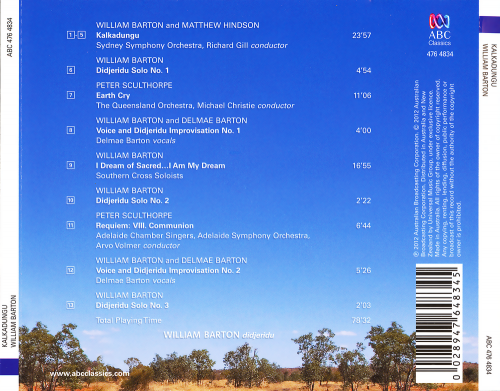
DOWNLOAD FROM ISRA.CLOUD
William Barton - Kalkadungu Music for Didjeridu and Orchestra.rar - 364.4 MB
William Barton - Kalkadungu Music for Didjeridu and Orchestra.rar - 364.4 MB
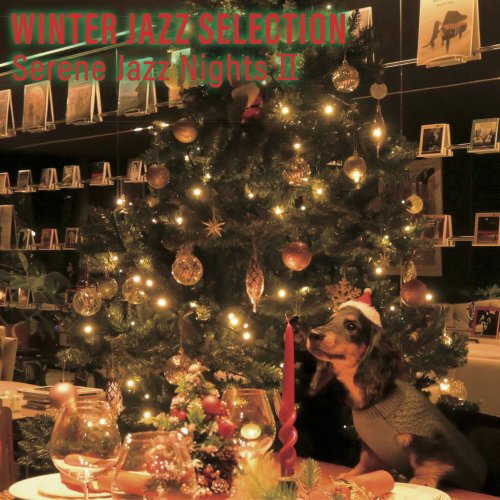
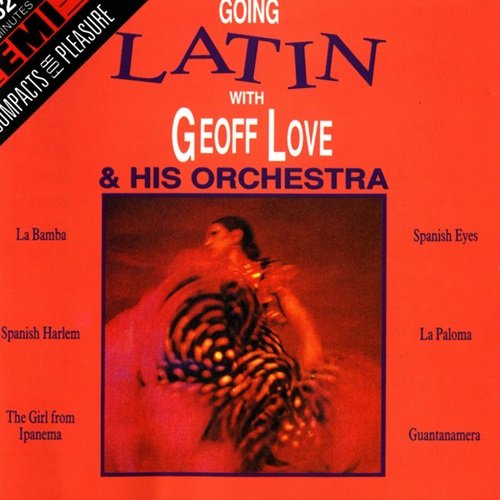
![Xavi Torres - Amsterdam Magic (2025) [Hi-Res] Xavi Torres - Amsterdam Magic (2025) [Hi-Res]](https://www.dibpic.com/uploads/posts/2025-12/1766061682_cover.jpg)
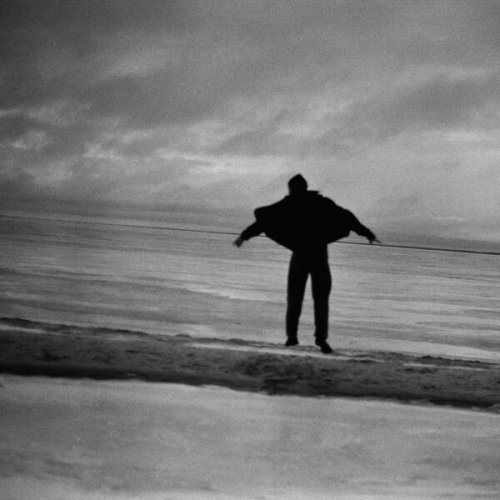

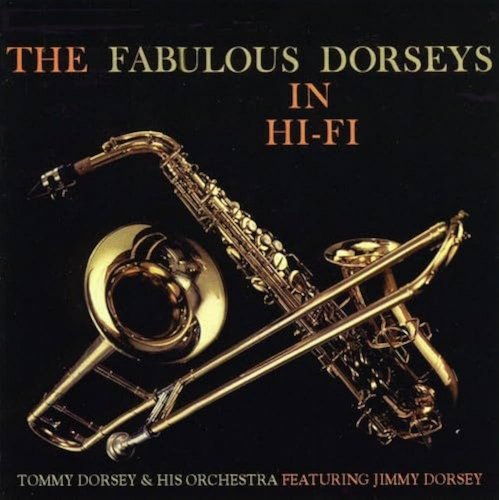
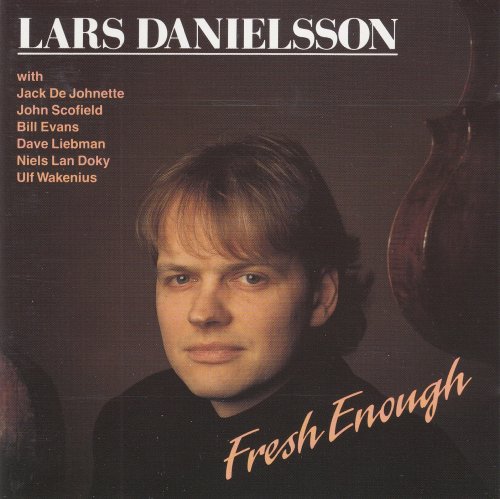
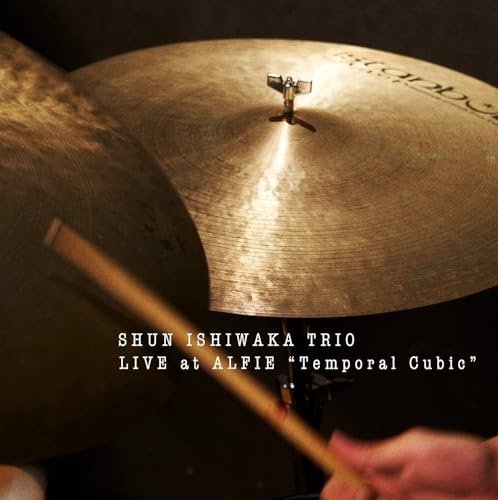
![Demo Rumudo - Second Nature (2025) [Hi-Res] Demo Rumudo - Second Nature (2025) [Hi-Res]](https://www.dibpic.com/uploads/posts/2025-12/1765883076_cover.jpg)